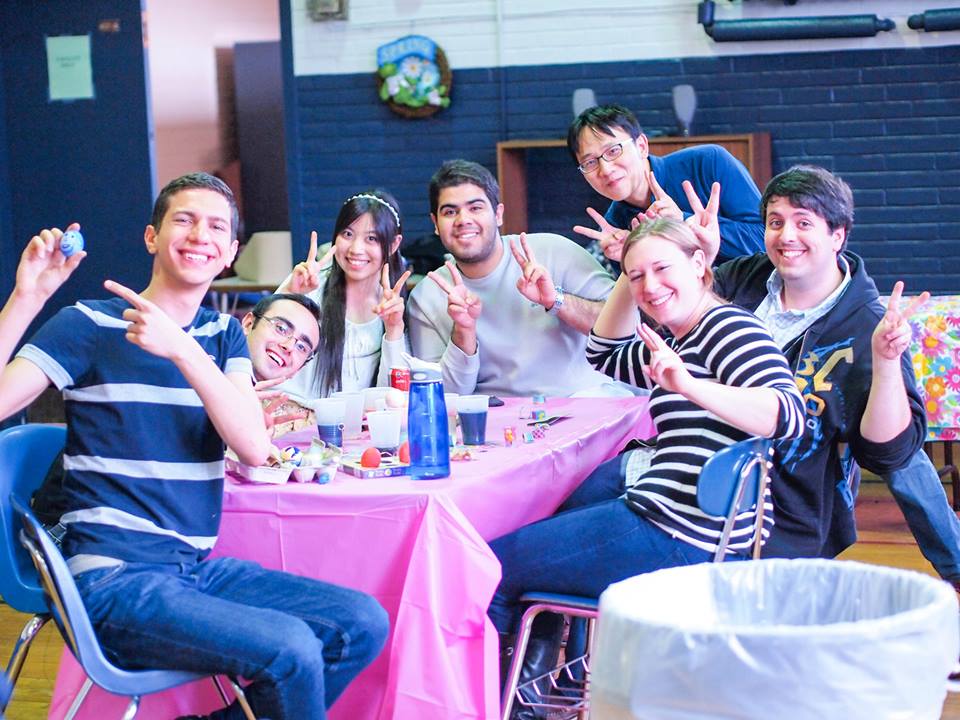|

Sarah Elia
|
|

Melissa Feldmann
|
As lecturers at an intensive English program, the authors
coordinate events to connect ELLs to native speakers to foster
cross-cultural communication. The following article is a description of
their work and may be used as a guide for planning successful
events.
Collaboration and Funding
Our first step is to collaborate with other department leaders,
including the Office of Student Activities, Foreign Language
Department, and the Athletic and Recreation Center. Through
collaboration, we know exactly what each department already has planned
for the semester or year and can provide a wider variety of activities.
We reach out to prospective collaborators with our ideas via email,
phone calls, or in-person introductions.
This collaboration promotes a balanced attendance of both ELLs
and native speakers. It also allows us to share resources, avoid
overlapping schedules, and expand our budget. We also apply for grants
that we find through campus email alerts or online research, and
sometimes have students pay a nominal fee to participate in the event.
Further, to facilitate cross-cultural relationships with the
surrounding community, we reach out to the local public library and
community organizations, such as Kiwanis Club, to find volunteer
participants. Community volunteers are invited to join our students on
off-campus trips to local historic sites.
Scheduling Events
Once we connect with another department, we brainstorm a
variety of interactive on-campus events. These have included game club,
conversation table, conversation partners, language sharing, and
athletic tournaments. For cultural exchange, we have offered events that
celebrate traditional holidays such as Thanksgiving, Halloween, and
Mid-Autumn Festival. Workshops designed by ELLs focused on specific
cultural arts, foods, or games, are also a great way to share individual
cultures.
Sports competitions are among our most popular events. For
example, the Mini World Cup was developed through collaboration with the
Languages, Literatures, and Cultures Department. Because of the
collaboration, there is a balanced attendance of native speakers and ESL
students, and a balance of staff support from participating
departments.
Advertising
Advertising is a necessary partof promoting events. One main
event flyer is created each semester and distributed at student
orientation. It is posted in highly trafficked areas throughout campus,
and promoted by email, social media,
department newsletters, and faculty announcements. Individualevent
advertising is begun at least 1 week before an on-campus event. The
names of the cosponsors are always included on all advertising
materials. These materials are also sent to directors of campus
programming to reach the wider campus community.
Surveys
Finally, surveys are distributed at every event to solicit
feedback from the students. This usually happens during the last 10
minutes of an on-campus event. There are questions about the choice of
venue, food quality, activities at the event, scheduling, how they heard
about it, and ideas for future events, as well as an open comments
section. Surveys are collected and a summary report is created and
discussed among the cosponsors or planning committee. These survey
results are used to apply for future grants and to create a more
positive experience for future events.
Conclusion
As educators of ELLs, it is important to facilitate the
cross-cultural connections between ELLs and native speakers.
Collaboration is key to successful event planning, and using survey data
helps to make alterations to each event, allowing them to become
stronger and more valuable to students in the future.

ESL students in the Haggerty English Language Program decorate eggs with their American peers at SUNY New Paltz.
Sarah Elia is a lecturer at the Haggerty English
Language Program at the State University of New York (SUNY) at New
Paltz, and president of NYS TESOL. She has a BA in music from Bard
College and an MS in TESOL from SUNY New Paltz.
Melissa Feldmann is a lecturer and event coordinator
at the Haggerty English Language Program at SUNY New Paltz. Melissa has a
BS in elementary education and special education from SUNY Geneseo and
an MS in TESOL from SUNY New Paltz. | 
